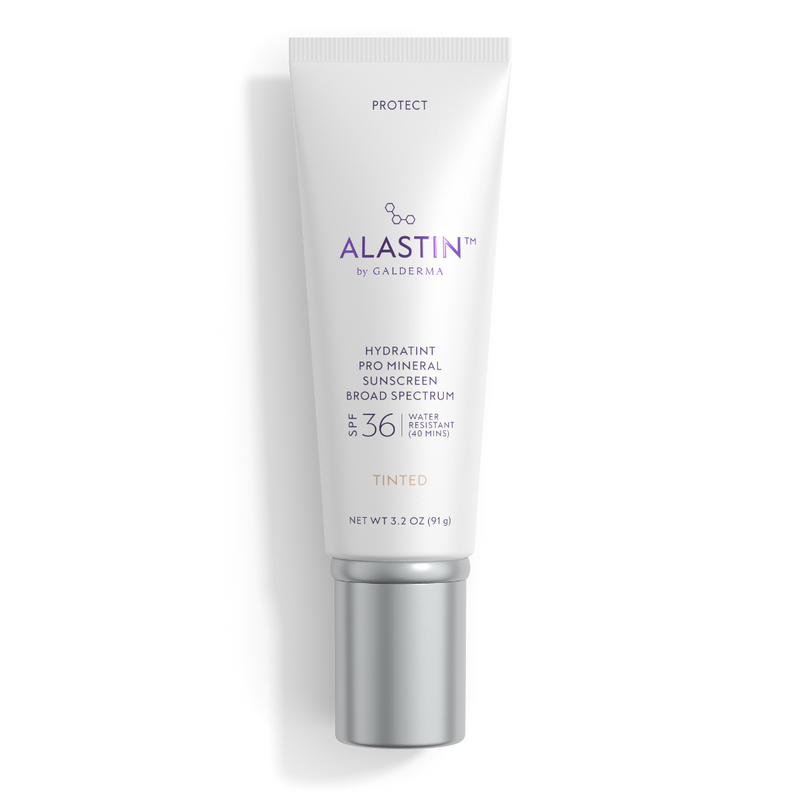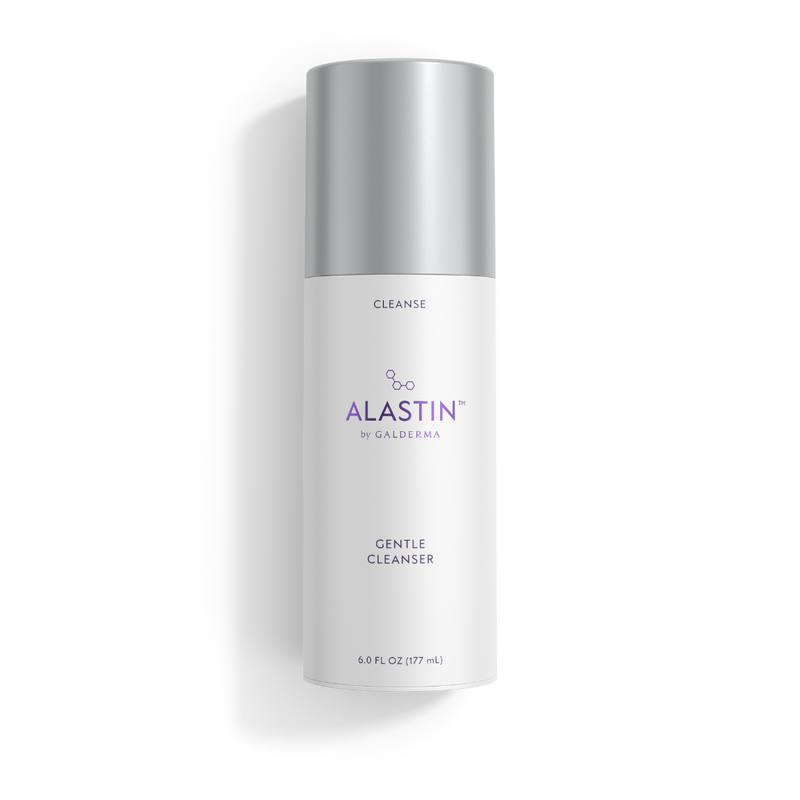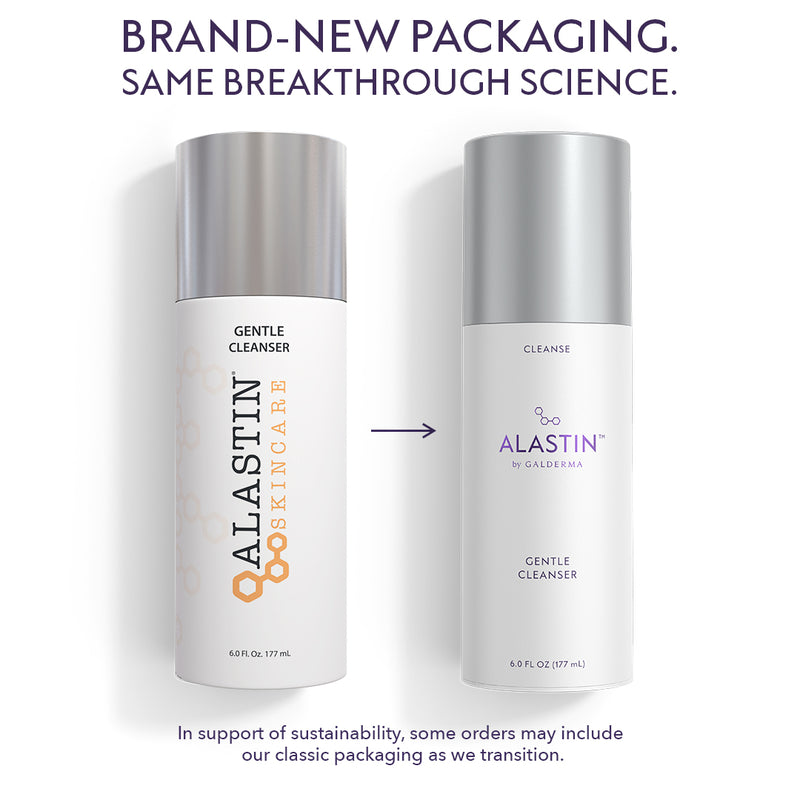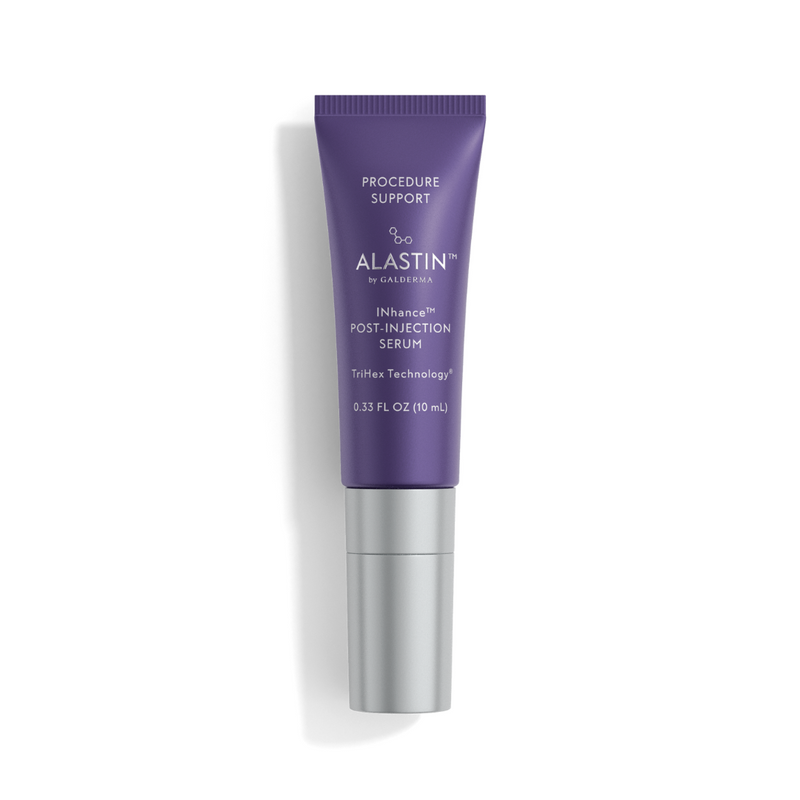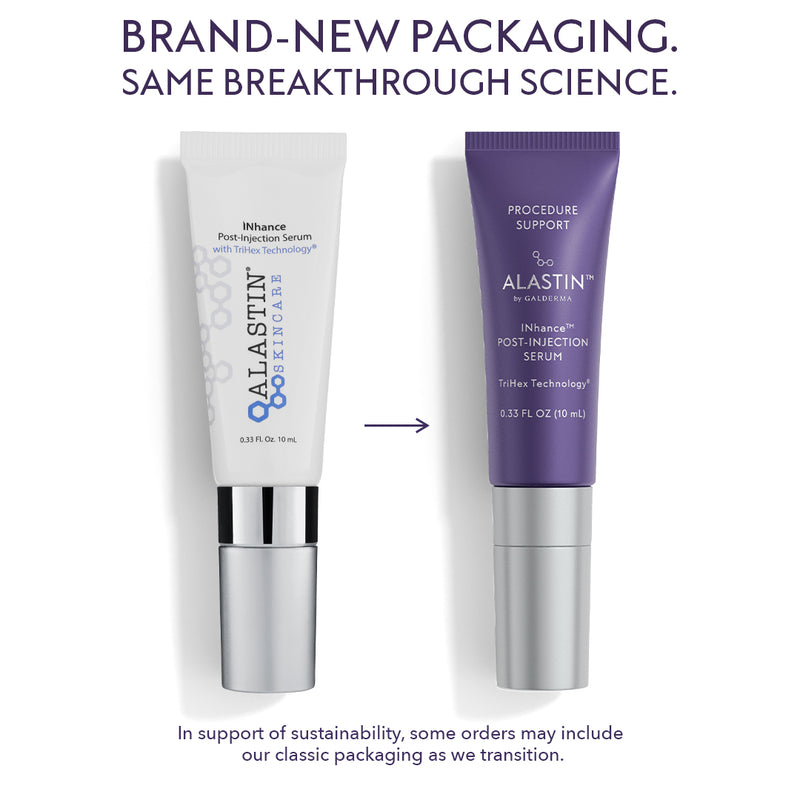You have no items in your bag
Skincare Beginner’s Guide: Facial Fillers

Facial Fillers 101: Everything You Need to Know Before You Get a Dermal Filler
So you’re considering taking the plunge, or more appropriately, the syringe…
Perhaps you’ve been following your favorite celebrity on Instagram, or the reflection in the mirror isn’t reflecting how you feel on the inside anymore. Or maybe some of your girlfriends have been getting facial fillers for a couple years now, and they seem to be aging in reverse, and group photos are no longer much fun.
Whatever your reason, you’re considering getting a facial filler, also known as a dermal filler injection, to address your fine lines and wrinkles around your face and you have some questions. We want to give you all of the information you need to make a smart decision, but first a few words of wisdom...
Before You Get a Facial Filler, Know This…
- Don’t try this at home. Do not go to any home parties, do not buy anything from the internet, and do not inject anything into yourself. There is a reason why a license is required to inject fillers into your face, and your face is not something you want to take a chance with.
- Not all injectors know what they are doing. Do your homework. Talk to your friends, read skincare expert reviews, and look at skin before and after’s. It is easier than ever to do your research these days, so there is no reason to walk in blindly. Look at their credentials and understand if they are permitted to inject in your state. It is your responsibility to know the rules, regulations, and laws.
- How do I know who is licensed to inject in my state? Search online under the licensing board in your state; for example, if you live in California, this is the state’s Department of Consumer Affairs search tool to find licensed skincare individuals and practices.
- Really consider your reason for wanting a facial filler. Why do you want to get a dermal filler and where do you want it? Perhaps more importantly, consider what are your expectations and your desired end result? Just because everybody else is doing it is not necessarily a good reason to have facial fillers done yourself.
- Not all facial fillers are the same. Again, do your homework. It is your responsibility to be informed so you can ask the right questions when you are in front of the licensed skincare professional who will be performing your injections. For a breakdown and comparison of some of the more popular facial fillers, keep reading below.
- Lastly, consider a consult first, before you commit. If this is your first time, consider a consult with a skincare expert and get more than one opinion from a trusted professional.
It is normal to be nervous and uncertain. The last thing you want to do is make a rash, or impulsive decision, on something so important and costly.
By doing a consult first, you can gather all of the information, take it home, and think about it. You can weigh all of your options to make a confident, informed decision which will allow you to achieve your best results and the most beautiful version of you!
Thousands of women (and men too!) make the commitment every day to get fillers for reasons that are right for them. The medical professionals trained to perform injections can provide you with a service and a product that is truly transformational.
If you need help finding a skincare expert near you, use the ALASTIN Skincare Expert Search Tool to get started.
Popular Questions & Answers About Facial Fillers
What is a Dermal Filler?
Injectable dermal fillers can help to reduce signs of aging. How do they work?
- As we age, the fat deposits in facial skin that make our skin look plump and youthful—begin to break down and lose elasticity. Losing our fat deposits can lead to the appearance of a hollow face or sagging skin.1
- As skin loses elasticity and oil, every day facial expressions can begin to leave wrinkles and grooves in the skin.
- Filler injections plump areas that have lost facial volume—from hollow cheeks to carved-out facial wrinkles.
Different signs of aging may require different filler formulations. Likewise, injecting more or less filler can achieve different results. For example, the volume and type of filler that easily fills in the fine lines around your eyes may have little effect on thin temples.
What is the difference between Botox and dermal fillers?
Botox®, also known as a toxin injection, contains purified bacteria that freeze muscles in order to help minimize the appearance of lines and wrinkles caused by facial expressions.
Dermal fillers, like Juvederm® and Restylane®, contain ingredients that add fullness to areas that have thinned due to the aging process, most commonly in the lips, cheeks, and around the mouth area.
Both are minimally invasive procedures (meaning they do not require surgery) given through injections.
Dermal fillers and toxin injections are an effective way to treat fine lines, wrinkles, and more.
Berry, J. (2018, January 6). "What is the difference between Botox and dermal fillers?." Medical News Today. Retrieved from: https://www.medicalnewstoday.com/articles/320510.php.
What are the side effects of facial fillers?
Facial fillers are considered to be safe but side effects can occur, most commonly:
- skin rash, itching, or pimple-like eruptions
- redness, bruising, bleeding, or swelling
- undesirable appearance, such as asymmetry, lumps, or overcorrection of wrinkles
- skin damage that causes a wound, infection, or scarring
- ability to feel the filler substance under the skin
- blindness or other vision problems
- death of skin cells due to loss of blood flow to the area
Berry, J. (2018, January 6). "What is the difference between Botox and dermal fillers?." Medical News Today. Retrieved from: https://www.medicalnewstoday.com/articles/320510.php.
How long do fillers in the face last?
Typically, and often depending on the brand/product and the injector, most facial fillers last anywhere between six months to two years.
Do fillers move in your face?
You may have heard of the term “filler fatigue”, a beauty buzz word that describes what happens when someone has had too many fillers and over time, the filler stretches and weighs down the skin causing a chain reaction of more visits to the doctor.
Facial fillers, particularly in the cheek area, with excess use over time, have been known to move around in the face as is explained in detail by plastic surgeon Michelle Yagoda in this article, This Is What Happens When You Get Too Much Filler In Your Face, from the Huffington Post.
Bruccullieri, J. (2018, April 18). "This is What Happens When You Get Too Much Filler In Your Face." Huffington Post. Retrieved from: https://www.huffpost.com/entry/filler-fatigue-too-much-filler_n_5ad628d8e4b077c89ced3966.
What are the best fillers for the face?
In order to select the best fillers to use on your face, you should follow the six steps outlined above, and then consult your skincare expert to talk in detail about your skin and your desired results.
As mentioned in #5 above, doing your homework is a critical early step in the process, and to help you get started, you may want to review this article from WebMD: What You Should Know About Wrinkle Fillers. The article offers a deep dive into hyaluronic acid wrinkle fillers (arguably the most popular category of facial fillers which includes Juvederm® and Restylane®) as well as synthetic wrinkle fillers, collagen wrinkle fillers, and autologous wrinkle fillers.
Gardner, S. (2017, January 30). "What You Should Know About Fillers." Web MD. Retrieved from: https://www.webmd.com/beauty/wrinkle-fillers-what-you-should-know#1.
How much does a facial filler cost?
The cost of fillers can vary for a number of reasons including the type and amount of filler used, location of the practice, the level of expertise of the injector, and the duration of the procedure.
To give you an idea, the cost of 1mL for a hyaluronic acid wrinkle filler may cost between $500-1,300.
One important note is that most insurance companies do not cover aesthetic procedures like facial fillers so you’ll likely need to cover the cost yourself.
Skin by Lovely. (2014, May 15). "Dermal Fillers with Before & After Photos." Skin by Lovely. Retrieved from: https://www.skinbylovely.com/dermal-fillers-with-before-after-photos/.
What Happens When Fillers Wear Off?
If your filler is made of hyaluronic acid, calcium hydroxylapatite, or PLLA, your body naturally absorbs or breaks down the injection over time. Hyaluronic acid begins to be reabsorbed in as little as 6 months.
It’s a common misconception that when fillers wear off, wrinkles and fine lines can become worse, but that’s not the case. When fillers start to diminish, some of the original wrinkles and fine lines present in your face will return, but they’ll be much softer in appearance.
However, you may be so used to your post-filler new look that your pre-existing wrinkles seem worse. But fillers are meant to stimulate your skin to produce more collagen, not less. Any prior lines or wrinkles can only improve, even when fillers wear off.
4 Popular Types of Facial Fillers
1.) Hyaluronic Acid
Have you heard of the following fillers?
- Restylane ® family fillers by Galderma
- Juvederm ® family fillers by Allergan
- Belotero® by Merz
- Teoxane® by Revance
While each of these types of dermal fillers uses slightly different technology (and Juvederm ® and Restylane ® have several different formulas), all rely on one common ingredient as the basis of their product — hyaluronic acid (HA).
Hyaluronic acid naturally occurs throughout our bodies, especially in the following areas:
- The fluid around our eyes
- Connective tissue
- Cartilage and joint tissues
So hyaluronic acid, or HA, is something our body makes to keep us in good working condition. Because our bodies already contain HA, it’s unlikely to cause an allergic reaction in most people2.
How does this liquid add volume?
HA is thirsty—that is, readily able to store moisture. However, if injected on its own, it would leave the bloodstream in two days. Instead, products like Juvederm® and Teoxane® use crosslinking agents to create HA gels with greater longevity in the body.3
Hyaluronic acid filler is currently approved by the Food and Drug Administration to fill moderate to medium-depth facial wrinkles and scars.
Is hyaluronic acid filler right for you?
Depending on the specific formulation, hyaluronic acid may help to fill any of the following kinds of wrinkles:
- Fine lines around your eyes (crow’s feet)
- Smile lines (at the corners of your mouth, also known as nasolabial furrows)
- Vertical lines between the eyebrows (frown lines)
- Vertical lines above the lips (also known as smoker’s lines)
- Horizontal lines across the forehead
HA filler can also reduce the appearance of some facial scars (depending on their depth).
Because different fillers have different particle sizes, talk to your healthcare provider to determine which specific brand may be right for you.
Effect and Longevity
After an HA injection—and any filler injection—you can expect bruising and swelling at the site.
It may take some time for the filler to fully settle into your tissue. You may be even more satisfied with your results after one month than you were after one day.
How long your filler will last depends on the specific formula used. Here’s a quick cheat sheet to give you an overview:
- One study found that people who received Juvederm ® Plus by Allergen fillers still had visibly reduced nasolabial furrows after nine months.4
- The same study found that visible improvements from Juvederm ® Ultra Plus by Allergen persisted for twelve months.
- Other studies suggest that HA filler can actually stimulate collagen production, which could lead to further or maintained improvement over time.5
With proper skin care, you can expect HA fillers to last anywhere from six months to a year or even longer.
Hyaluronic Acid Filler Cost
Beauty is priceless. But according to the American Society of Plastics Surgery, the average cost for HA filler is around $620.6
As with all fillers, the cost will vary depending on factors like the following:
- Average rates in your geographic area
- Your healthcare provider’s training, experience, and rates
- The volume of fillers required to achieve the desired effect
- The numbers of areas treated per session
2.) Calcium Hydroxylapatite Fillers
Although the name looks more complicated, calcium hydroxylapatite is a lot like HA. This mineral compound naturally occurs in the human body. It can be found in human bones, and is well-tolerated by most people.7
Radiesse® by Merz and other popular fillers suspend this mineral in a gel carrier to create products that are FDA-approved for the treatment of moderate and more severe lines including the following:
- Nasiolabal folds, the deeper furrows between the mouth and the nose
- Smile lines at the mouth and frown lines on the forehead
Besides filling in lines, fillers can also increase tissue volume:
- Fillers can be injected to create plumper, fuller looking cheeks
- They can also enhance facial contours in the jawline and chin or augment thin temples
- Potential applications extend beyond the face, i.e., augmenting bony hands
If facial symmetry is a concern, applying calcium hydroxylapatite fillers to just one side of your face (or injecting them in different amounts) may help achieve your desired appearance.
Effect and Longevity of Calcium Hydroxylapatite Fillers
Calcium hydroxylapatite is considered a long-lasting filler, and can last for up to one year.
A 2006 study of over 600 people who received Radiesse® by Merz surveyed receipts' satisfaction with their injectable dermal fillers after six months. 89% of subjects said that they would be interested in undergoing the procedure again in the future.8
Unlike HA, this kind of filler is not known to stimulate collagen production. However, its efficacy at filling in deeper lines and creating volume can make it a solid choice. Getting another round of injections after the results wear off is commonplace.
Calcium Hydroxylapatite Filler Cost
The American Society of Plastic Surgeons states that the average price of treatment is just slightly more expensive than HA at $690.9
Again, your individual price may vary from this number.
3.) Poly-L-Lactic Acid (PLLA) Fillers
Unlike the two fillers we’ve discussed so far, PLLA is a synthetic compound that does not naturally occur in human bodies. However, it is biodegradable.
Rather than filling lines in itself as do HA and calcium hydroxylapatite, PLLA stimulates your body to produce that golden protein—collagen.
Sculptra ® by Galderma and other similar PLLA formulas are appropriate for filling in mild-to-moderate lines, like laugh lines. They can also be used to plump lips.10
Longevity and Effects of Poly-L-Lactic Acid Fillers
Because PLLA is a “stimulant” filler (i.e., it stimulates natural collagen growth), it does not take effect immediately.
As your body begins to produce its own collagen, you can expect to see the fullest results in about six weeks.11
This synthetic compound is then gradually eliminated by the bloodstream, with a half life of about six months. However, you may continue to see effects for between one and two years.
PLLA Cost
According to the ASPS, the average cost for Sculptra ® by Galderma is $878.12
4.) Polymethylmethacrylate (PMMA) Fillers
Looking for a more permanent filler for your mild-to-moderate facial lines? Then you might be interested in polymethylmethacrylate (PMMA).
This substance is a synthetic polymer, and unlike the other fillers on this list, it is not biodegradable. However, it has long been used in dentures and prosthetic devices without adverse or carcinogenic effects.13
Bellafill® filler was first FDA-approved in 2006 for the long-term correction of nasolabial folds. It was found that people who received a single injection had noticeable results for up to five years.
Some may find PMMA’s long-lived effects preferable to the prospect of yearly injections.
PMMA fillers can be used for the following applications:
- Mild to moderate facial lines
- Acne scars
PMMA Cost
According to the ASPS, the average cost for PMMA fillers is $855.14
What kind of skincare regimen should I use before my facial rejuvenating procedure?
The consult with your skincare expert will help you to determine the proper skincare regimen before and after your facial procedure, but one tip they will all tell you is to make sure you have a dermatologist-approved broad spectrum sunscreen to protect your skin year-round.
The ALASTIN Skincare Regenerating Skin Nectar with TriHex Technology® will help to support your skin's natural ability to produce new collagen and elastin, making it a great complimentary product to use before and after facial filler treatments. As always, consult with your doctor on any new skincare regimen.
If you have sensitive skin, you might also consider a Gentle Cleanser to help calm the skin before and after your treatment as well.
There are likely endless questions you have about facial fillers, but we hope we’ve answered a few of your initial questions. We encourage you to consult your skincare expert and continue to research how you can achieve your desired results, and get glowing skin!
Sources:
- “Why Your Faces Ages and What You Can Do.” Harvard Health Publishing. https://www.health.harvard.edu/staying-healthy/why-your-face-ages-and-what-you-can-do
- Monheit, Gary and Kyle Coleman. “Hyaluronic Acid Fillers.” Dermatologic Therapy 19 (2006). https://onlinelibrary.wiley.com/doi/pdf/10.1111/j.1529-8019.2006.00068.x?casa_token=w6Hg6ZOJFtQAAAAA:teKtQcgGaUFP9v4vyrOtzgDm0bVA4-GfeINJYJpTMXTIfCXYe3i17f1G7CtRC9-MLmkgm54ZHQ6Dlg
- Bogdan Allemann, Inja, and Leslie Baumann. “Hyaluronic acid gel (Juvéderm) preparations in the treatment of facial wrinkles and folds.” Clinical interventions in aging 3.4 (2008). https://www.ncbi.nlm.nih.gov/pmc/articles/PMC2682392/
- Lupo, Mary et al. “Effectiveness of Juvéderm Ultra Plus dermal filler in the treatment of severe nasolabial folds.” Plastic Reconstructive Surgery 121.1 (2008). https://pubmed.ncbi.nlm.nih.gov/18176233/
- Wang, Frank et al. “In Vivo Stimulation of De Novo Collagen Production Caused by Cross-linked Hyaluronic Acid Dermal Filler Injections in Photodamaged Human Skin.” Archives of Dermatology (2007). https://jamanetwork.com/journals/jamadermatology/article-abstract/411242
- The American Society for Aesthetic Plastic Surgery Cosmetic Surgery National Data Bank Statistics. https://www.surgery.org/sites/default/files/ASAPS-Stats2016.pdf
- Pavicic, T. “Calcium hydroxylapatite filler: an overview of safety and tolerability.” Journal of Drugs in Dermatology 12.9 (2013). https://europepmc.org/article/med/24002146
- Jansen, David et al. “Evaluation of a Calcium Hydroxylapatite-Based Implant (Radiesse) for Facial Soft-Tissue Augmentation.” Plastic and Reconstructive Surgery 118.3S (2006). https://journals.lww.com/plasreconsurg/Abstract/2006/09011/Evaluation_of_a_Calcium_Hydroxylapatite_Based.6.aspx
- “Dermal Fillers.” American Society of Plastic Surgeons. https://www.plasticsurgery.org/cosmetic-procedures/dermal-fillers/cost
- Woerle, Brigit et al. “Poly-L-lactic acid: a temporary filler for soft tissue augmentation.” Journal of Drugs and Dermatology 3.4 (2004). https://pubmed.ncbi.nlm.nih.gov/15303782/
- Ibid
- “Dermal Fillers.” https://www.plasticsurgery.org/cosmetic-procedures/dermal-fillers/cost
- Gold, Michael and Neil Sadick. “Optimizing outcomes with polymethylmethacrylate fillers.” Journal of Cosmetic Dermatology 17.3 (2008). https://onlinelibrary.wiley.com/doi/full/10.1111/jocd.12539?casa_token=zDEH6C0QqOcAAAAA%3A-D5NVuuayzA8QKJaSzr2W0om_DXb_4nrG81csUaBZz47zH4QTr68x8zhjmAFmFAurh8COj1rmrDfow
- “Dermal Fillers.” https://www.plasticsurgery.org/cosmetic-procedures/dermal-fillers/cost

$84.00
$258.00


